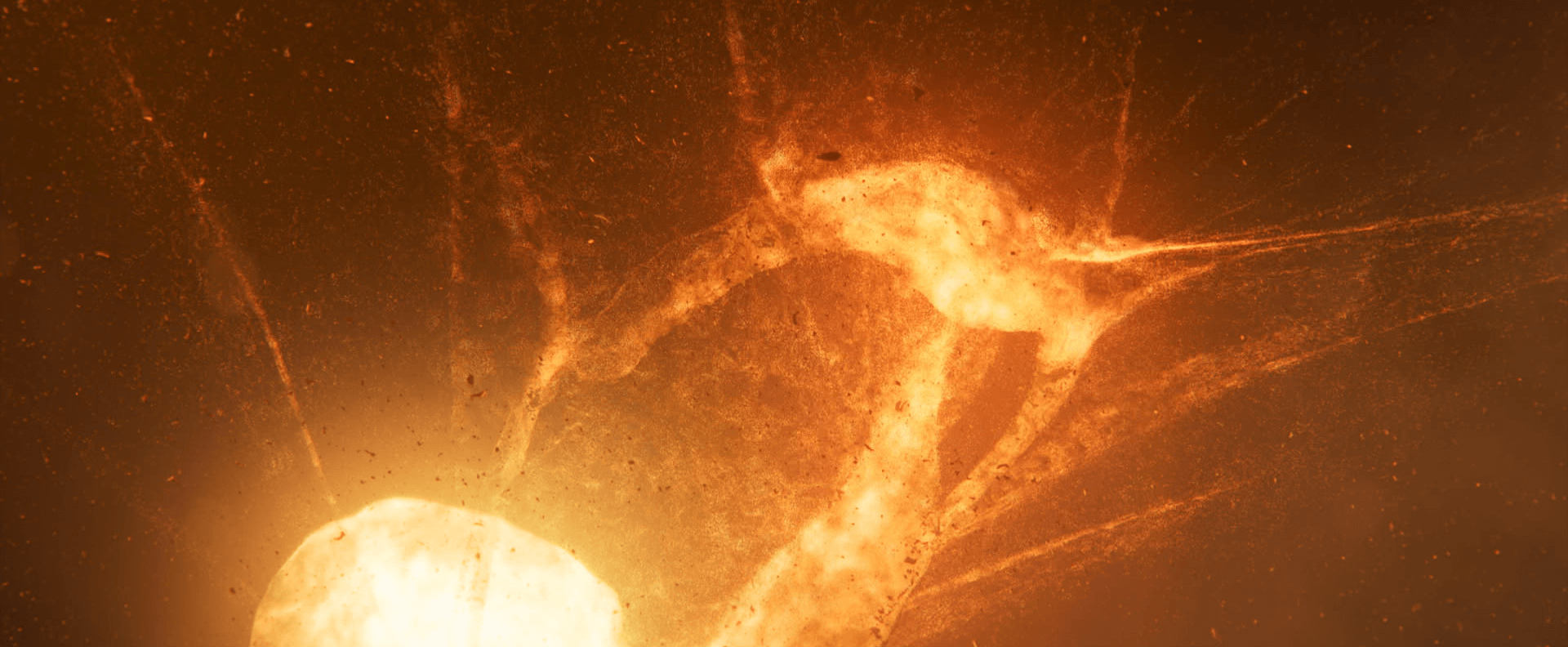Our Universe VFX: Bringing the early universe to the screen
The Brief
Lux Aeterna was tasked with delivering Our Universe VFX shots, blending cosmological science and natural history. The landmark Netflix show Our Universe was created by the BAFTA and Emmy Award-winning BBC Studios Science Unit and is narrated by Hollywood actor Morgan Freeman. Taking viewers on a journey from the early cosmos to find out how all of the ingredients for life ended up on Earth, Our Universe needed to convey complex scientific concepts through cinematic VFX.
Client
Netflix/BBC Studios Science unit
Year delivered
2022
What we did
We spent 18 months working on more than 700 Our Universe VFX shots, creating a mind-bending visual grammar to showcase everything from the Big Bang to epic galactic collisions. While creative cinematic cosmic phenomena was our primary focus, we also fine-tuned some of the show’s real-world wildlife footage.
Many of the sequences we worked on involved invisible forces, such as solar winds and Earth’s magnetic field, which were particularly challenging to bring to the screen. The focus for our 25-strong team of artists was to tell these scientific stories in a new way, with cinematic visuals and a compelling narrative driving the six-part series.
For one particular sequence, we used data from Durham University’s Institute for Computational Cosmology (ICC) showing the formation of Earth’s moon. The data from Dr Jacob Kegerris, a postdoctoral researcher currently based at NASA’s Ames Research Center in Silicon Valley, helped us to recreate the Earth’s collision with a massive Mars-sized object known as Theia, and the formation of its moon from the debris.
With Jacob’s simulation data, we were able to develop a photo-realistic scene. To our surprise, the finished sequence showed a second moon that was formed out of the collision, so we were also able to add a new shot to show the second moon being reabsorbed.
Working with such an enormous amount of data was a significant challenge. It took us four weeks to process a staggering 30TB of data into the various formats we needed. In fact, a total of 1.4 trillion data points were processed to create the Our Universe VFX shots. As a result, we turned to the cloud to scale up our rendering output. Working in Houdini, Maya, and Nuke, we also created a range of in-house tools to address specific challenges. To keep track of the workflow, we used ShotGrid production management software.
The results
By building a robust and powerful pipeline to enable us to work with the large amounts of data involved on Our Universe, we are now incredibly well-placed to take on more projects at this scale and beyond.
We worked closely with the team at BBC Studios throughout the project, reviewing shots daily, so that we were able to deliver all shots on time. Thanks to the support from both BBC Studios and Netflix, we were able to bring a compelling story to the screen with mind-blowing visuals.
Need help with your project? Take a look at our services.









